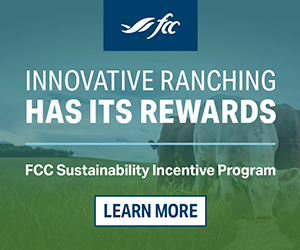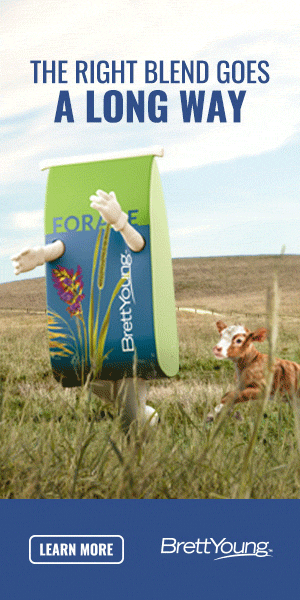AB Direct - Steers
Rail: ---
AB Direct - Heifers
Rail: ---
US Trade- Steers
Rail: ---
US Trade - Heifers
Rail: ---
Canadian Dollar
0.15
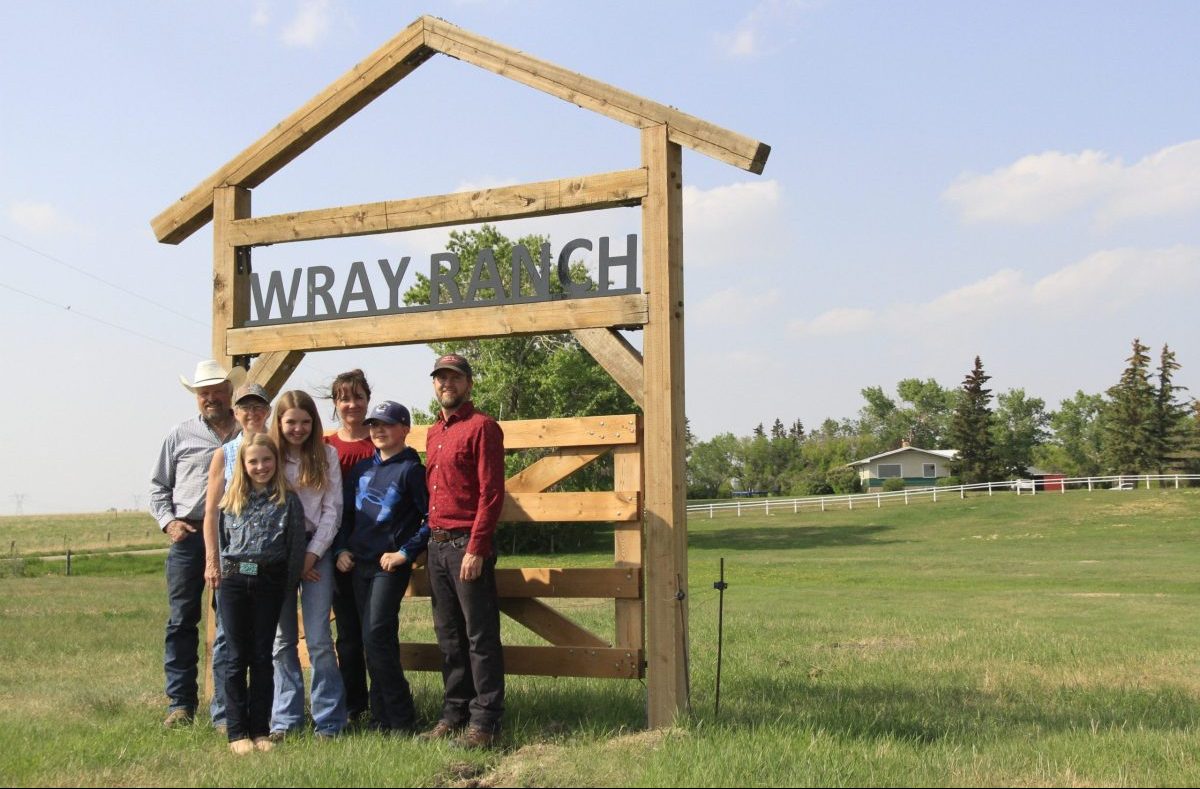
Celebrating Wray Ranch, the 2023 Environmental Stewardship Award winner
Since 1992, Alberta Beef Producers (ABP) has recognized farms and ranches across the province whose natural resource stewardship practices contribute to the environment and enhance productivity and profitability.
Alberta Beef Producers, Ducks Unlimited Canada, and the Nature Conservancy of Canada are pleased to announce Wray Ranch and the Wray family as the recipients of the 2023 Environmental Stewardship Award.
Ask the Wray family about their ranch, and it quickly becomes clear that everything they do is shaped by a deep reverence for the land.
This perspective shines through whether they’re touring visitors in pastures that overlook a dramatic coulee, moving cattle to a new paddock, or reviewing production data at the kitchen table.
“Being out on the landscape, being engaged with nature is very rewarding,” says Doug Wray, the third generation of his family to manage this ranch west of Irricana, Alberta.
“We get to see life cycles, we get to see calves born, reach maturity, become cows in the herd. It’s a very natural world to live in, to have a hand in all of that.”
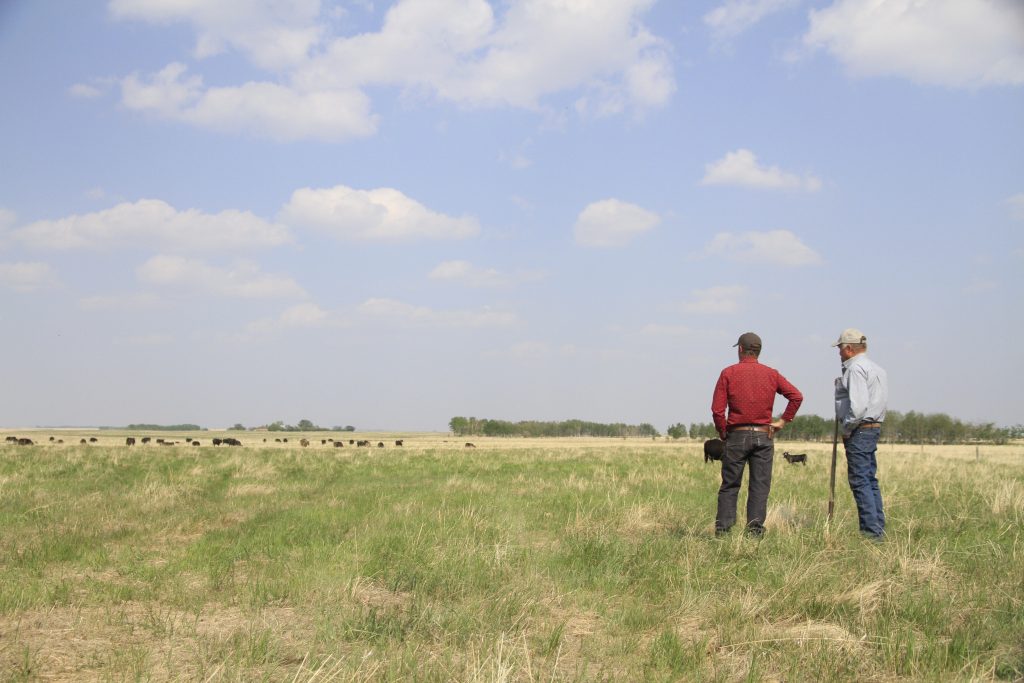
The Wrays’ stewardship story began in 1910, when Doug’s grandfather arrived in the Irricana area, northeast of Calgary. For 80 years, the family operated a mixed farm, with the local conditions supporting both crop and pasture production.
“Intermediate-grass prairie would be the native habitat. We have some prairie grassland that’s never seen a plow on this farm, and we recognize and treasure that resource,” says Doug.
Doug and his wife Linda have operated the ranch for the past 25 years, shifting their business to a grazing operation in the late 1990s. As they both loved raising cattle and were looking to the future, with their children going their own directions, livestock became their new focus.
Opportunities such as attending a Ranching for Profit school and joining the Foothills Forage and Grazing Association (FFGA) helped to shape this new direction. Soon they seeded 1,000 acres of former cropland to high-legume perennial pastureland, and divided pastures into 20-acre paddocks to support more frequent pasture rotations.
Today, the fourth generation of the Wray family has taken its place in managing the ranch. Doug’s nephew Tim Wray and his wife Joanne returned to the ranch in 2015, where they live with their three children. Tim and Joanne bring a new perspective and a willingness to learn and innovate, opening new doors for this century farm.
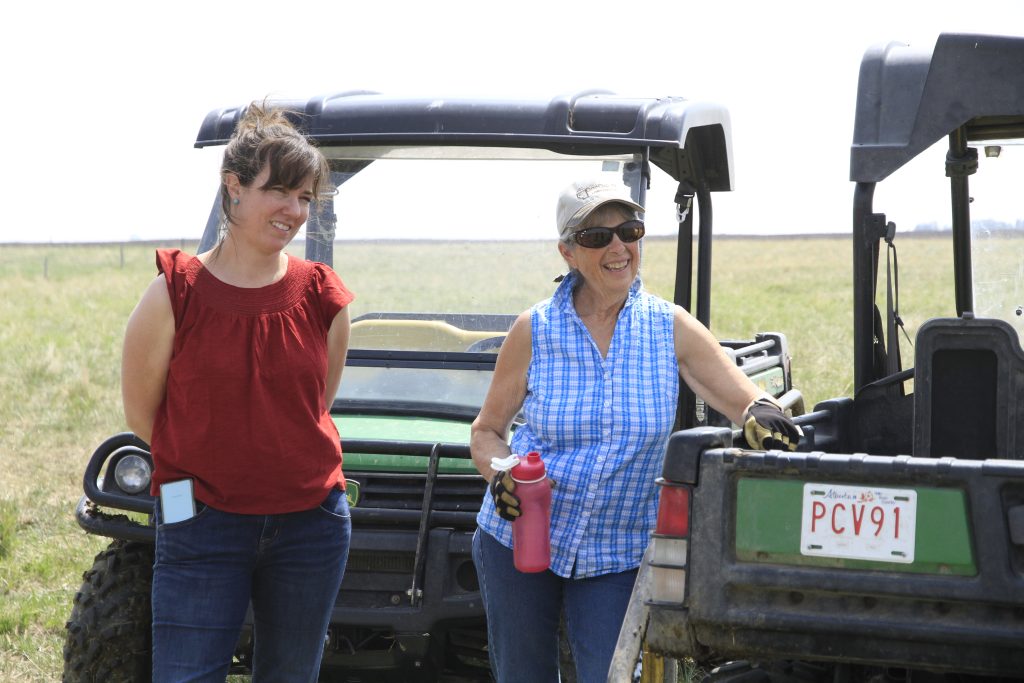
Giving more to the land
The Wrays have used a year-round grazing system for more than 20 years, carefully monitoring each paddock for forage volume and quality. From May to October, their cattle graze tame pastures, and after weaning in early November, calves will winter on swath-grazed greenfeed. The cow herd winters on native coulee pastures, which are stockpiled to last until late January, at which time they’re moved to greenfeed swaths. If there is sufficient grass, backgrounded calves will be kept over to the next fall as yearlings.

This system allows more than just the cattle to thrive naturally. More than 75 bird species have been spotted on the ranch over the years. With funding from ALUS and Rocky View County, the Wrays have further supported wildlife by fencing the riparian areas on the ranch and implementing offsite watering projects run by solar and wind-powered pumps.
Supporting life below the surface is just as important, and the family has restored the health of their soils by leaps and bounds. When they first moved from conventional tillage agriculture to a grazing operation, the organic matter on their 1,000 acres of cropland was 2.3 to 3 per cent. Today, organic matter on that land is now more than 7 per cent, the result of pasture management and tillage practices that prioritize conservation, as well as the use of swath grazing and bale grazing in winter.
These management practices have also helped to increase infiltration capacity and soil aggregate stability while reducing soil compaction and density. As well, this land is estimated to sequester up to 60 tonnes of carbon dioxide equivalent per acre.
“If we can get those systems in the soil working right to raise healthy crops, to raise healthy livestock to provide healthy food, that’s what we’re doing,” Doug explains.

A commitment to continuous improvement drives their activities, as the family is always looking to learn more about grazing, pasture management, and soil health.
“The stuff we learned in the 20 years we did it together, and now with Tim, with new ideas, and technology is growing, too, so you learn different things,” says Linda. “It’s never a process that stands still. You’re always trying to move forward.”
This focus on learning led Doug to become a well-known advocate within the forage industry. He was a founding member of the Alberta Forage Industry Network and represented Alberta through the Canadian Grassland and Forage Association, receiving the latter’s Leadership Award in 2016.
Participating in research and sharing their experiences with other producers and agriculture groups are also important to the Wrays. For example, Tim organized an on-farm cover crop trial in 2019, bringing together FFGA, Food Water Wellness, the Irricana Ag Society, and the Centre for Rural Community Leadership and Ministry. He is currently participating in a Regenerative Agriculture Lab with Rural Routes to Climate Change, which is focused on introducing regenerative agriculture to the mainstream.
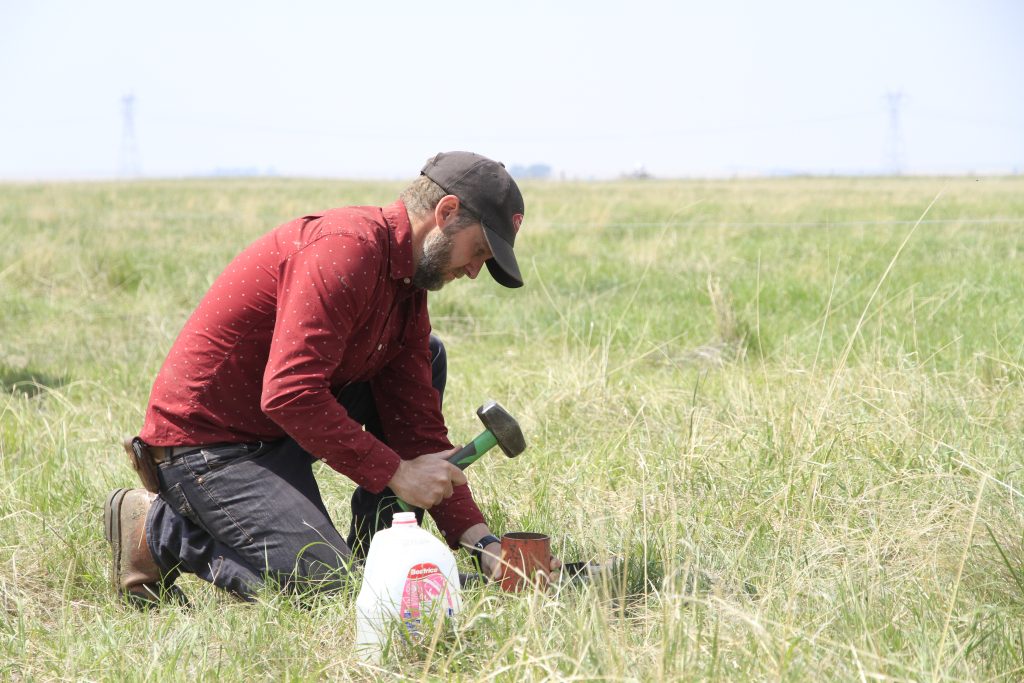
“Probably the biggest challenge is there’s so many things out of our control. We’re part of a system that’s so sophisticated and buzzing with life,” says Tim.
“The best we can do is present ourselves humbly to the day, observe what’s going on, and with our broad network across the industry, within research, beyond our sector even…try and understand and appreciate how the ecosystem functions to make a viable business.”
With the past five years bringing drier than average conditions, the Wrays’ passion for regenerative agriculture has proved vital in how they’ve dealt with challenges created by reduced precipitation and hotter temperatures. To decrease grazing pressure on their pastures, they’ve reduced their herd size, rented pasture, and worked with neighbours to use any crop failures as a feed source.
“You must give more and take less in order to let the land heal and return the blessing,” they acknowledge. “We are pleased that after two consecutive hot dry years our pastures are still in good shape, with stockpiled grass to catch snow and ground thatch to preserve valuable moisture.”
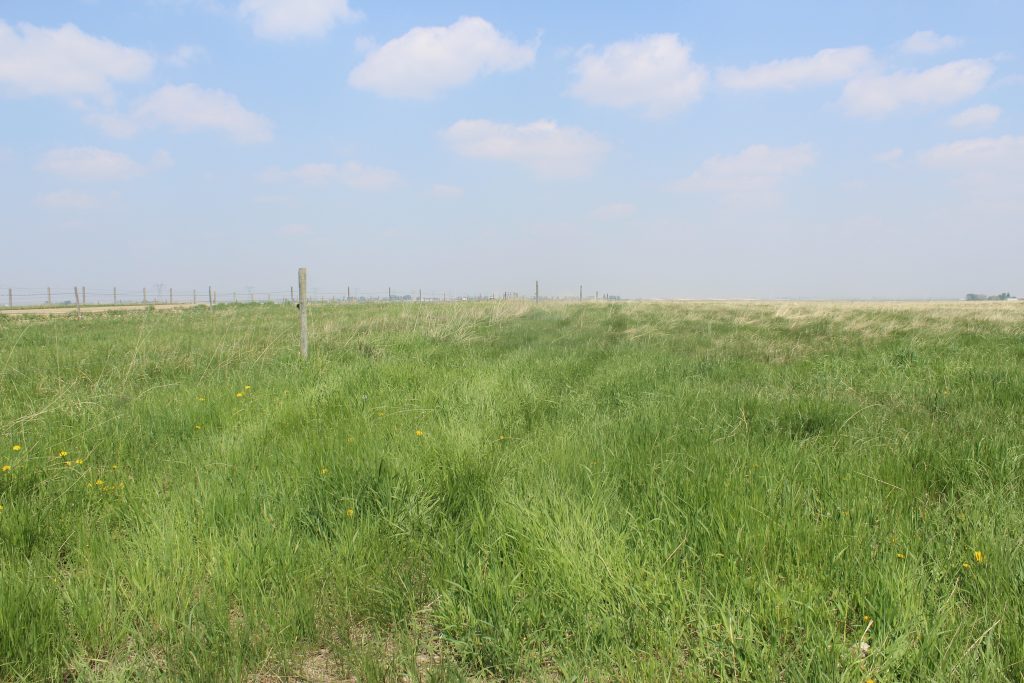
Always progressing for the next generation
With their sights set on future generations, the sustainability of Wray Ranch continues to be a major priority for the family.
“Living on a ranch that’s been in the family now for 113 years, and with the next generation coming on board, we want to leave our land better than we found it, and being stewards of the land is something that we all aspire to,” says Doug.
Using their network of trusted experts and peers to help inform their management decisions, the family has set several goals for their business. These include continuing to improve their grazing, soil, and livestock resources, increasing dugout capacity, and finding methods of using little to no tillage to rotate weaker pastures back to annual crops before returning to stronger perennial pastures.

It all comes back to being able to care for this land and their cattle, a privilege the Wray family doesn’t take for granted, and a lifestyle they aim to share with others.
“When I look at this place and what it has brought to our family, it’s been a place where people encounter the majesty of life and the power of friendship,” says Tim.
“To try and give another generation the opportunity to experience that is very motivating.”


